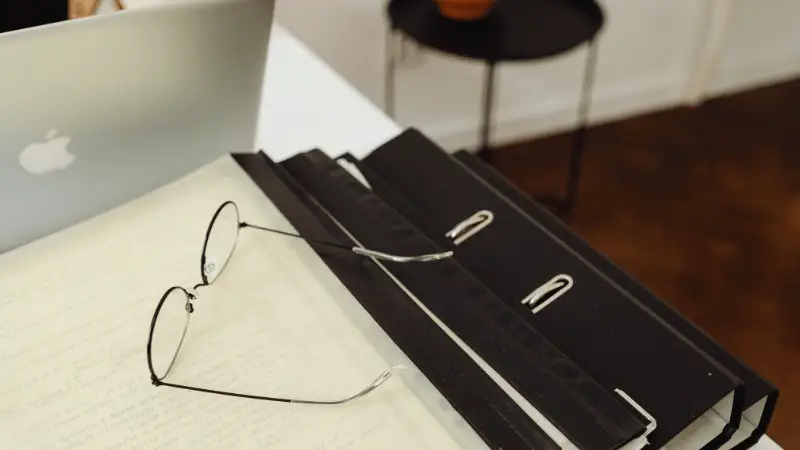
Original article written by legacy firm, KDP Advisors (2022)
Learn how to create a comprehensive legacy binder to protect your family. Include passwords, legal documents, financial details, and more.
Individuals often pass away without leaving loved ones with critical information such as financial accounts, legal documents, policies, and passwords. In the past, family members could typically locate essential documents and information by checking a person’s desk or file cabinet. However, in today’s digital world, things aren’t so simple.
Most of us have a variety of accounts, both online and offline. If something happens to you, your loved ones will need to know how and where to access those accounts. This is where a Legacy Binder comes in handy.
A Legacy Binder is a collection of documents and information that can be used in the event of your death or incapacity. With a Legacy Binder, your family, agent, or fiduciary will have immediate access to your critical information in one place.
What should a Legacy Binder include?
There’s no one-size-fits-all approach to creating a Legacy Binder. The contents will vary depending on your situation and what you feel is essential for others to know. However, there are some general categories of information that you may want to include:
- Passwords
- Financial information
- Household information
- Digital assets
- Legal documents
- List of personal effects
- Important contacts
- Final arrangements
Passwords
If you use an online password manager, you probably have a master password to access your account. Additionally, it may require multi-factor authentication in addition to your login credentials. It will be critical to include the login credentials in your password manager or provide instructions on how to find the credentials in your Legacy Binder.
In addition to your password manager, you may want to include instructions on accessing your computer and mobile phone. Those may require login information not commonly stored in the password manager.
Financial Information
A list of financial accounts and documents should be included in your Legacy Binder. Loves ones will need to pay bills, potentially cancel accounts and manage your estate. Common financial information includes:
- A detailed list of assets and debts
- Real estate deeds
- Automobile titles
- Mortgages, auto loans, a home equity loan, and any other debt instruments
- Lease agreements
- Bank account information
- Online payment accounts (e.g., PayPal, Venmo, etc.)
- Investment account information
- Cryptocurrency accounts
- Employment benefits
- Retirement accounts cush as a pension, IRA, or 401(k) information
- Credit card account details, including points programs
- Frequent flyer and other travel accounts
- Most recent tax returns
- Insurance Policies (Health, Life, Home, Umbrella, etc.)
- Business ownership information, including subscription, operating agreements, and any other related agreements
Household Information
Whether you own or rent, your loved ones will need information about how you manage your household. Consider any household services or subscriptions that your family will need to manage your home in your absence. Common household information to include:
- List of important contacts (e.g., household service providers)
- Account information for utilities (e.g., electricity, water, sewer, trash, gas, cable, etc.)
- Homeowner’s Association membership information and dues
- Household contracts (e.g., lawn care service)
Digital Assets
Digital assets have become an ever more critical part of our lives. Include information on the following:
- Your photos and videos
- Domains, blogs, and websites you own
- Your social media accounts
- Document storage (e.g., Google Drive, OneDrive, local hard drive, etc.)
- Online subscription services
Legal Documents
Even if you keep original copies of legal documents in a safe or safety deposit box, include copies of these documents in your Legacy Binder. Standard legal documents include:
- Birth certificate
- Marriage certificate
- Passport
- Divorce decree/settlement agreement
- Your Will
- Trust documents
- Living Will & Advance Directives
- Power of Attorney documents
- Social security card
List of Personal Effects
While your Will and Trust may cover the disposition of large, valuable items and the bulk of your estate, you likely have smaller items of sentimental value. Often, people prefer to designate specific heirs to receive certain items, such as jewelry or artwork. You may even specify items to sell to pay debts, while other items you’d rather keep in your family. If this is the case, it could be helpful to create a list of these items along with instructions describing what you would like done with them.
Once you create this list, it’s wise to consult with an attorney to determine the best way to memorialize your wishes. They can help you find a way to add your wishes to a Will or Trust, so they are legally binding.
Important Contacts
First, provide the contact information for any professionals you use, such as your lawyer, accountant, banker, investment manager, and insurance agent.
Second, list any contacts whom you would like notified in the event of your death. Include names, phone numbers, and email addresses.
Final Arrangements
Your loved ones must be able to locate your burial instructions or final arrangements quickly. If you have pre-purchased funeral services, purchased a cemetery lot, or have identified a cemetery, provide those details. If you desire to be cremated, provide instructions on how you want your ashes distributed.
How to Make a Legacy Binder
Making a Legacy Binder is a relatively simple process. Begin by gathering all the essential documents you wish to include. Once you have everything, it’s best to keep both physical and electronic copies. We suggest storing a physical copy in a fireproof safe if available. For electronic documents, it is easiest to store these with a secure cloud storage provider or an online vendor that specializes in online Legacy Binders.
Once you’ve created a Legacy Binder, it’s essential to maintain it. Ensure that you add any new documents and remove outdated ones. You should also update your contact information and financial information regularly.
Finally, make sure your loved ones know where to find your Legacy Binder. Inform them of the storage location and the procedure for accessing any electronic copies.
Conclusion
Legacy binders may seem like quite a bit of work, but they don’t have to be. By following the tips in this article, you can create a Legacy Binder that will be a valuable asset to your loved ones.
While this article covers the more common items individuals should include in their Legacy Binder, it is not all-encompassing. You may need to include other things based on your unique situation.
A Thoughtful Next Step for Securing Your Legacy. Contact Sorren Today
Creating a Legacy Binder is one of the most thoughtful and practical ways to protect your loved ones from unnecessary stress during challenging times. Having everything meticulously organized—from passwords to your final arrangements—not only empowers your family but also provides you peace of mind knowing they won’t have to search for critical information in your absence.
While this guide has supplied you with a comprehensive starting point, no two situations are alike. Your Legacy Binder is a reflection of your circumstances and values. To ensure your binder covers everything unique to your life, consider contacting an experienced professional who can tailor it to your needs.
Do you need more personalized support for your estate and legacy planning? Reach out to our office to discuss how we can help you create a meaningful and comprehensive Legacy Binder that accurately reflects your wishes. Secure your legacy today.
Original article written by legacy firm, KDP Advisors (2022)





